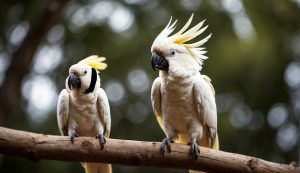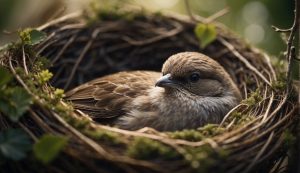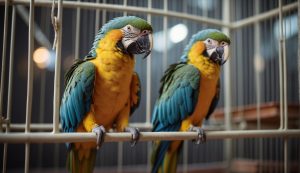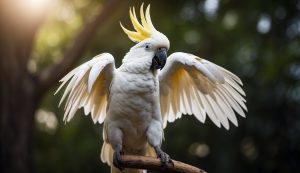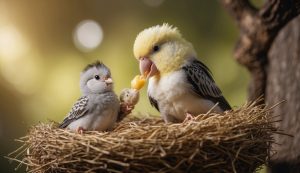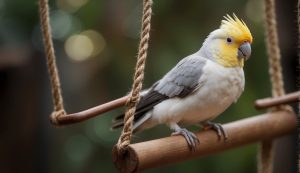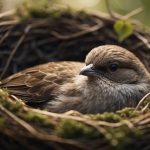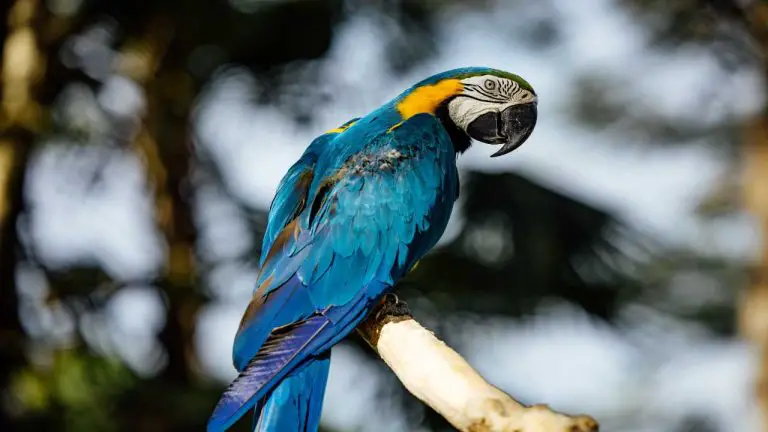How to Bathe a Cockatiel: Simple Steps for Your Bird’s Health and Hygiene

Bathing is an essential aspect of a cockatiel’s care. It contributes not only to their hygiene but also to their overall well-being.
Cockatiels often display energetic bathing behaviors. They derive immense pleasure from water, so it’s crucial to provide them with opportunities to bathe.
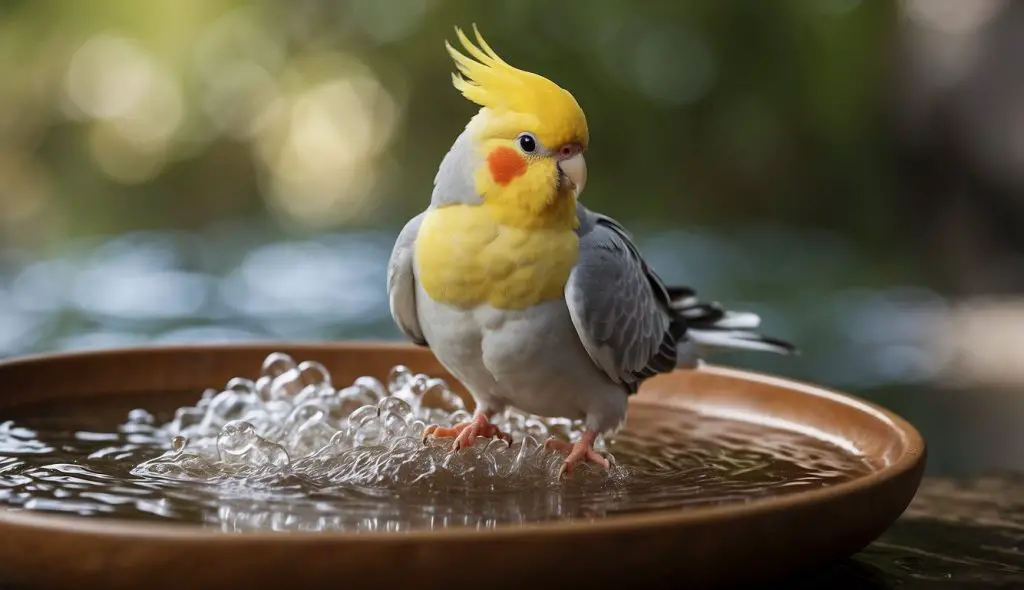
Before introducing a cockatiel to water, you need to create a comfortable and safe bathing environment. I always make sure that the water is at a pleasant temperature. I also ensure that the bathing container is stable and secure to prevent any accidents.
There are various bathing techniques available, including misting and offering shallow water dishes. Each method caters to different preferences of individual cockatiels.
Observing my bird’s reaction helps me determine the most enjoyable and effective method for them, enhancing their bathing experience.
After a joyous splash, post-bath care is equally significant. Cockatiels typically preen their feathers after bathing, which aids in their maintenance and the natural oil distribution.
I ensure their environment is warm to prevent chills and promote the drying process.
Maintaining a consistent bathing routine keeps my cockatiel in good spirits and looking their best, fostering a stronger bond between us. Additionally, by regularly offering a bath, any potential concerns about their bathing habits become apparent, allowing me to address them promptly.
Key Points
- Bathing is vital for a cockatiel’s well-being and mimics their natural grooming habits.
- A safe and comfortable bathing setup encourages a positive experience for the bird.
- Consistent bathing routines contribute to the cockatiel’s feather and skin health.
Table of Contents
Preparing to Bathe Your Cockatiel
When I bathe my cockatiel, safety and comfort are my top priorities. I always ensure a stress-free environment and proper water temperature to make the experience enjoyable for my little friend.
Setting Up the Bathing Area
I start by choosing a safe location to set up the bathing area. I usually pick an indoor area to maintain control over the environment.
I use a shallow water dish or an indoor birdbath specifically designed for birds to ensure that my cockatiel can stand comfortably without the risk of drowning. I often opt for a dish with a non-slip surface or place a smooth stone inside for my pet to grip. Here’s how I set it up:
- Cleanliness: Clean the bathing dish with mild soap and rinse thoroughly.
- Water Depth: Fill with enough lukewarm water to reach my cockatiel’s knees.
- Temperature Check: Verify that the water temperature is lukewarm and pleasant.
Choosing the Right Time for Bathing
Timing is everything. I make sure to pick a time when my cockatiel is alert and active, which is usually in the morning or early afternoon.
It’s important that there’s enough daylight remaining for my bird to dry off completely before the cooler evening temperatures. Here’s my checklist for timing:
- Active Period: Bathe my cockatiel during its most active hours.
- Post-Bath: Allow ample time for my bird to dry in a warm, safe environment.
- Observation: Keep an eye on my cockatiel to ensure a stress-free experience.
Additionally, I avoid bathing my cockatiel when the weather is cold or when my pet is sick, as this can lead to unnecessary stress and health issues.
Bathing Techniques for Cockatiels
Bathing is essential for maintaining my cockatiel’s health and plumage. Here are three effective methods I use to keep my feathered friend clean and happy.
Shower Method
I find that using the shower is a great way to bathe my cockatiel. It simulates a rain shower like they might experience in the wild.
First, I ensure the water temperature is warm and comfortable. Then, I place my bird on a shower perch securely attached to the wall. I gently let the water mist over them, making sure it’s not too strong to frighten or harm my bird.
Spray Bottle Method
The spray bottle method is a convenient way to bathe my cockatiel without too much hassle.
I fill a clean spray bottle with lukewarm water, set it to a fine mist, and gently spray my bird. It’s important for the bottle to be set to a mist setting to mimic gentle rainfall. This technique allows my cockatiel to enjoy bathing while perched comfortably in their cage.
Bowl Bathing Method
Lastly, the bowl bathing method is the simplest way I provide my cockatiel with a bath.
I place a large, shallow dish with lukewarm water at the bottom of the cage. My cockatiel can then hop in and out at their leisure, splashing and soaking as they please. It’s critical to ensure that the water is shallow enough to prevent any risk of drowning.
Post-Bath Care
After I gently bathe my cockatiel, ensuring it’s a stress-free experience, the next crucial steps are drying and grooming. These are essential for maintaining my bird’s feather health and comfort.
Drying Your Cockatiel
I always make sure to have a soft towel ready for drying.
Directly after the bath, I wrap my cockatiel in the towel and gently pat it down. I avoid rubbing as this can damage its feathers and make it uncomfortable. Since cockatiels can easily get cold, I keep the room warm to aid in the drying process.
- Method: Pat, don’t rub
- Towel: Soft and absorbent
- Environment: Warm room
It’s important to let my cockatiel dry completely before returning it to any drafty locations or its cage to prevent chill. Some owners use a hairdryer on a low, cool setting from a safe distance, but I prefer to let my bird air-dry in a secure, warm place.
Preening and Grooming
Once my cockatiel starts to preen, I know it’s comfortable. Preening is vital as it helps them align their feathers and distribute natural oils, which keeps the plumage healthy and waterproof.
I take this opportunity to gently speak and offer praise, reinforcing that grooming is a positive behavior.
- Watch for: Natural preening behavior
- Praise: Reinforce positive grooming demeanor
While my cockatiel preens, I observe its feathers and skin for any sign of issues. If I notice anything out of the ordinary, like fluffing up too much or any skin irritations, I’ll know to consult with a vet.
Maintaining a Healthy Bathing Routine
In my experience with cockatiels, establishing a consistent and tailored bathing routine is essential for their plumage and overall well-being. Our feathered friends rely on us to understand their preferences and health needs.
Bath Frequency and Timing
I find that the frequency of baths should be tailored to my cockatiel’s activity level, the climate, and its personal comfort. Here’s what I stick to:
- Spring/Summer: Twice a week to help them cool down and maintain feather condition.
- Fall/Winter: Once a week as they get less dirty and to prevent chills.
Regarding timing, I’ve noticed my cockatiel enjoys a good splash in the morning when it’s alert and active. Bathing in the evening is less ideal as the feathers may not dry completely before bedtime, which isn’t safe for their health.
Understanding Your Cockatiel’s Needs
Every cockatiel has a unique personality that influences how it perceives bath time. Here’s how I gauge my bird’s bathing needs:
- Observing behavior: I watch for signs of my cockatiel wanting to bathe, such as splashing water from its drinking bowl.
- Gradual introduction: If it’s hesitant, I introduce bathing gradually with a shallow dish of water to make it a safe and stress-free experience.
Frequently Asked Questions
Bathing is an essential activity for the health and hygiene of cockatiels. I’ve gathered some common questions to help you ensure your feathered friend enjoys its bath time safely and happily.
What’s the best way to introduce a cockatiel to its first bath?
I find that gradually acclimating a cockatiel to water is key. Start by placing a shallow dish of lukewarm water near your bird. Encourage it by gently misting the air above it, avoiding direct sprays until it seems comfortable with the idea of bathing.
Are there any specific considerations for bathing a female cockatiel?
The bathing process for female cockatiels is similar to that for males. However, ensure extra gentleness if she is in a breeding condition or has eggs, as stress should be minimized during these periods.
How frequently should a cockatiel be given a bath?
The frequency of baths can vary per bird, but I recommend offering a bath once or twice a week. Pay attention to your cockatiel’s behavior, as some may prefer more frequent bathing while others might not enjoy it as much.
What is the safe method to bathe a baby cockatiel?
For a baby cockatiel, moisten a soft cloth with warm water and gently wipe it down. Avoid submerging the bird or using a spray bottle until it’s older and feathers are fully developed.
At what age do cockatiels typically start bathing themselves?
Cockatiels start to show interest in bathing themselves at around 4 to 6 weeks old, when they begin preening and managing their own feathers.
What are some effective methods for cleaning a cockatiel’s feathers?
Two effective methods are providing a shallow water bath for the bird to play in. You can also lightly mist it with a spray bottle filled with warm water. Always let the cockatiel air-dry in a warm, safe environment afterward.

